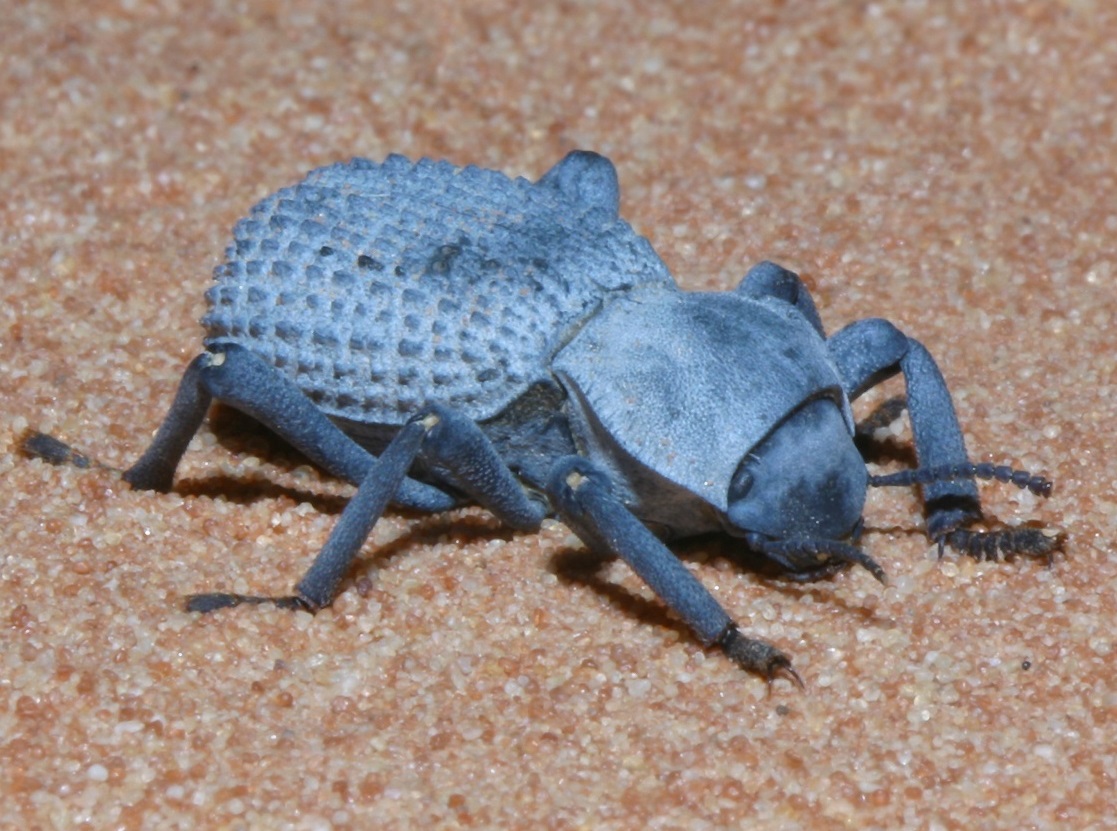Blue Death Feigning Beetle (Asbolus verrucosus)

The Blue Death Feigning Beetle rolls on its back and pulls all of its legs in to play dead when threatened because many of its predators prefer live prey. It can maintain this posture for hours if needed. The Blue Death Feigning Beetle is also called the Desert Ironclad Beetle and the Ghost Beetle.
Description:
Blue Death Feigning Beetles get their distinctive blue coloring from a wax that they secrete to protect themselves from the desert heat. They are small beetles. They average in length approximately 3/4 of an inch.
As their name indicates, Blue Death Feigning Beetles are powder blue in color. The beetle itself is actually black and will turn black when wet. It is the wax that gives it a blue coloring. They have spiky dorsal abdomens. They are insects so they have six legs.
The Blue Death Feigning Beetles is considered a darkling beetle that goes through a complete metamorphosis. Their larvae are a type of mealworm.
They are nocturnal. They live in colonies.
Habitat:
Desert environments.
Range:
They are native to the Mojave and Sonoran deserts in the southwestern United States but they can be found in the surrounding states and in Mexico.
Diet:
Herbivores. They are considered opportunistic feeders, meaning they feed on fresh or decaying vegetation.
Family Life:
Blue Death Feigning Beetles go through a complete metamorphosis from egg to larvae to pupa to adult. They live in colonies but forage independently.
Life Span:
The average life span is 8 years in the wild or in human care.
Status:
Not Listed. Although the Blue Death Feigning Beetle is not listed, its desert environment is threatened by development, environmental changes and natural resource allocation.
